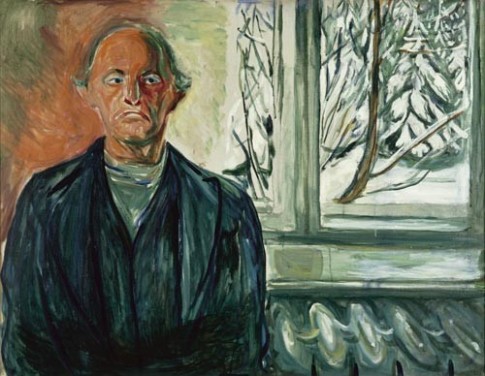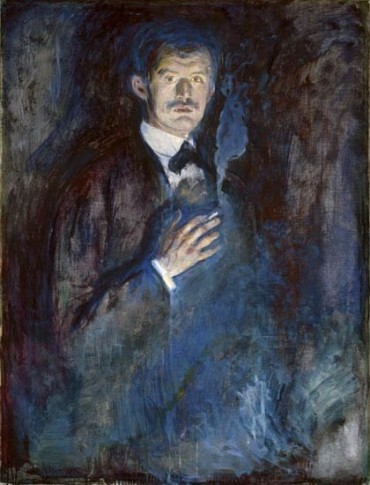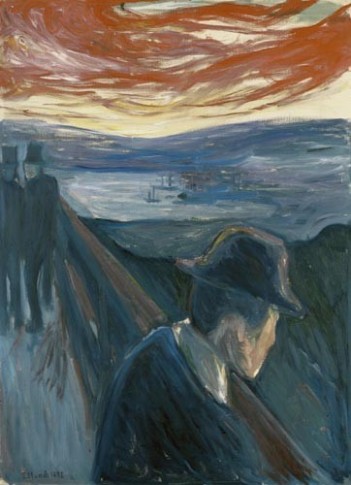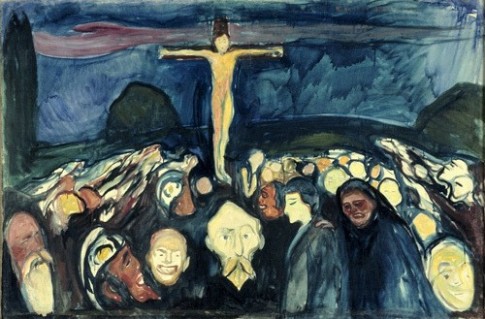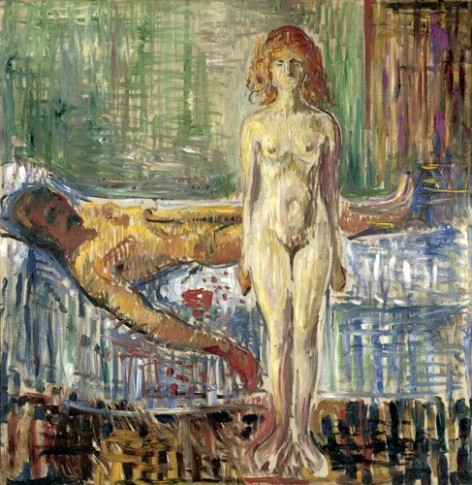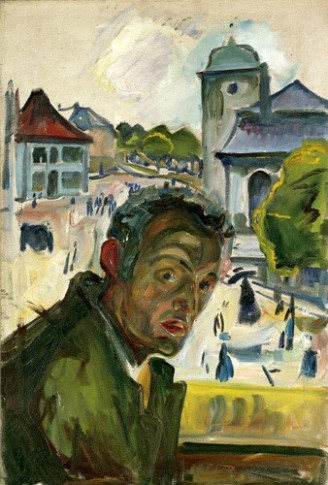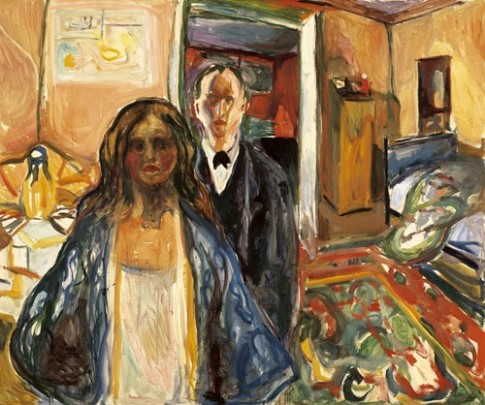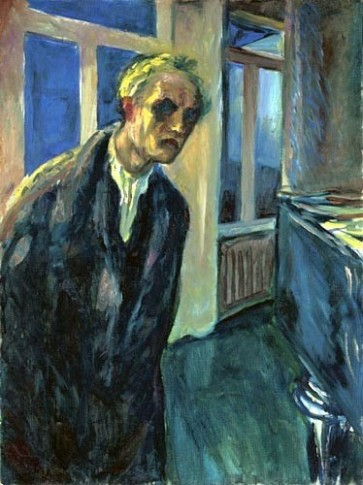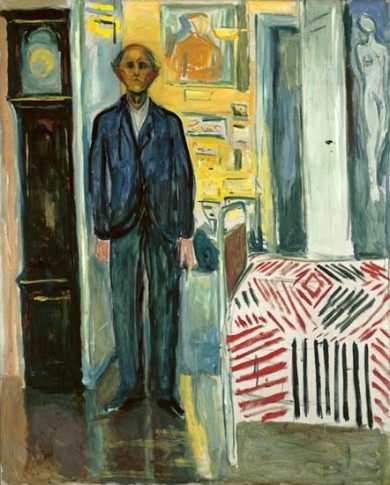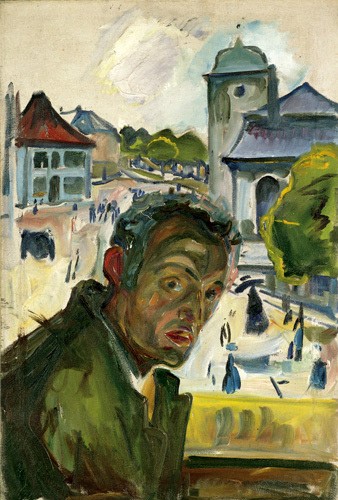
Edvard Munch, Self-portrait in Bergen, 1916 © Munch-museet/Munch-Ellingsen Gruppen/BUS 2005. Belong to Munch-museet, Oslo
Lonely in fame
In Self-portrait in Bergen (1916) Munch delivers a new account of his artist role and his relationship to the world. This is one of his key self-portraits from the 1910s. Munch was in Bergen for his exhibition at the Bergen Art Association. He had been an internationally acclaimed artist ever since his legendary Sonderbund exhibition in Cologne in 1912. As the only living artist represented at the show, Munch had an entire gallery to himself and was presented as a forerunner of 20th century art, on a par with Paul Cézanne, Paul Gauguin and Vincent van Gogh.
In 1916, however, the First World War was raging on the Continent. He poses, in solitude, on a balcony or by a window, averted from the bustling crowd in the square below. The artist’s right eye, almost in the centre of the painting, is the focal point of the composition. The eye is the opening towards the world – but his body keeps its distance. His gaze and facial expression bear witness of the painful sensation of not belonging to the world around him.

